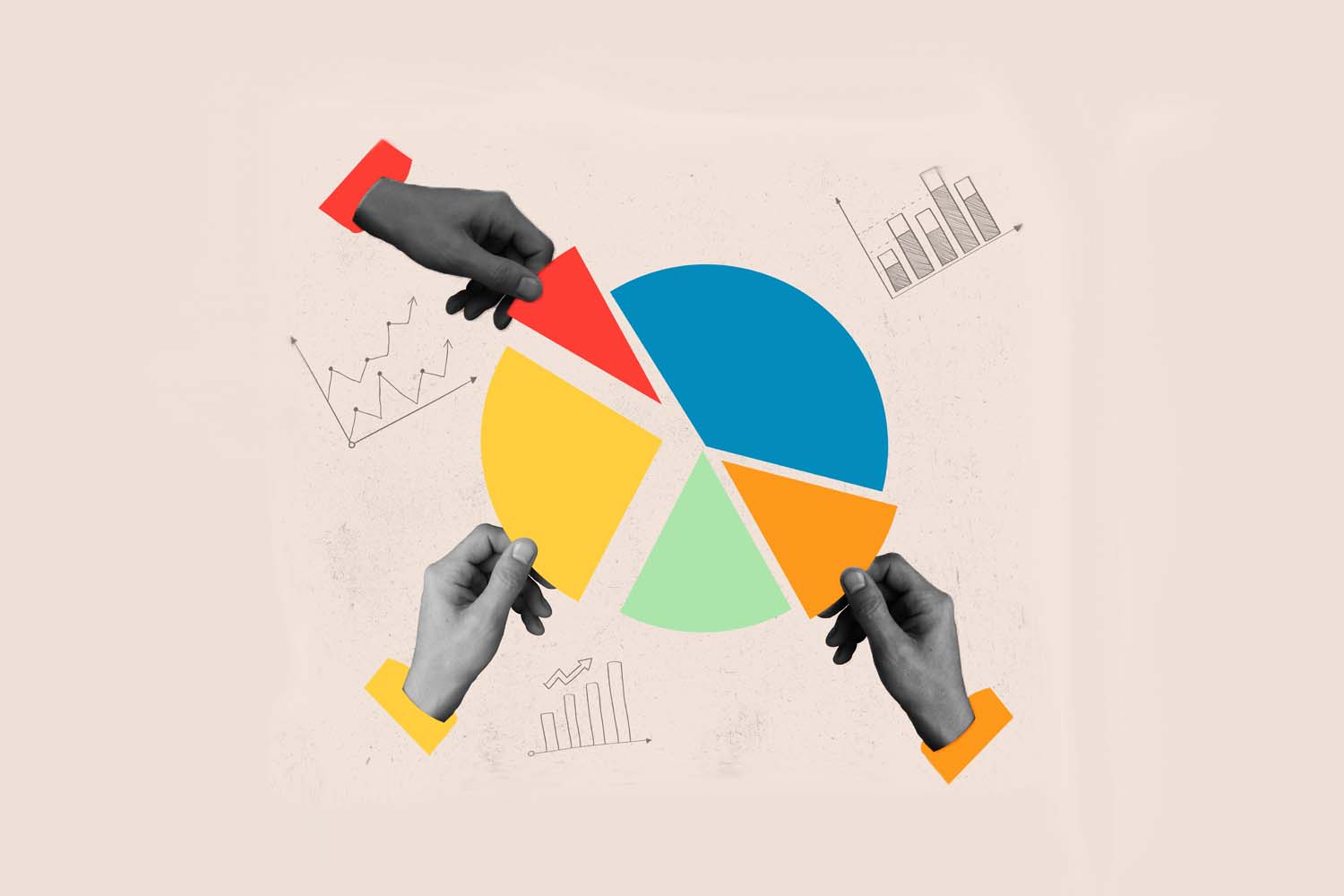As the global temperature rises, ice sheets shrink, and oceans get warmer, companies and governments around the world are investing in new ways to reverse the harmful effects of climate change. The global sustainability and green technology market was valued at $13.8 billion in 2022 and is projected to grow to $61.9 billion by 2030, according to a report by Fortune Business Insights.
Making sustainability a top priority means knowing the language and terms of going green. Knowing key terms can help you navigate and lead conversations with key stakeholders, including investors, clients, and employees.
How did the Kyoto Protocol and then the Paris Agreement pave the way for a global effort to address climate change by reducing greenhouse gas emissions? What are carbon credits anyway and how can my organization use them to reach carbon neutrality? These are some of the questions you’ll be able to answer with Senior Executive Sustainability’s glossary.
Glossary of Terms
Agronomy — The science and technology of crop production. It has expanded to include research conducted around soil science, plant genetics and physiology, and meteorology.
Agronomic data — Reveals the soil conditions, biodiversity, average yield, water resources, plant populations, and other details about a concentrated area and its surroundings. This data is used to track compliance with environmental regulations, predict pests and crop diseases, and guide spraying decisions.
Ag tech — Any type of agriculture technology, including artificial intelligence, machine learning, drones, and robotics, used to automate or increase the efficiency, sustainability, and profitability of farming processes.
Alternative energy source — Any energy source, such as wind or solar, other than fossil fuels such as oil and gas.
Anthropogenic emissions — Greenhouse gases emitted as a result of burning fossil fuels, fertilization, industrial processes, deforestation, and other activities.
Autonomous farming — The use of robots, AI, and automated machinery to decrease farm labor costs while improving yield and crop quality.
Biofuel — Transportation fuel derived from plant, algae, or animal waste. It’s considered a renewable energy source and an alternative to fossil fuels. Ethanol and biodiesel are the most common biofuels.
Built environments — Human-made structures and facilities where people live and work.
Carbon offset — A reduction or removal of carbon in the atmosphere to compensate for emissions produced elsewhere. For example, an airline may offset a customer’s carbon dioxide emissions from their flight by asking them to pay a fee that then goes toward a sustainability project like a tree-planting initiative.
Carbon negative — Producing less than zero carbon emissions. It is achieved by offsetting carbon emissions through carbon capture, carbon sequestration, or emission avoidance.
Carbon neutral — Producing net-zero carbon dioxide emissions. Companies achieve carbon neutrality by having a balance between carbon emissions and projects that offset pollutants.
Carbon footprint — Total amount of carbon emissions produced by a company or individual. This typically includes travel, as well as fuel and energy consumption.
Carbon capture and storage — The process of capturing and storing carbon emissions so they do not enter the atmosphere and contribute to climate change. Carbon capture involves taking emissions from industrial processes (ex: manufacturing steel), transporting pollutants from where they were produced, and storing them underground. Carbon capture is one method companies can use to reduce their carbon footprint.
Carbon credit — Also referred to as carbon offsets, carbon credits aim to reduce global greenhouse gas emissions by allowing companies to buy a certain amount of permits for one metric ton of carbon dioxide emissions. Any carbon credits a company doesn’t use may be sold to other companies. A certain amount of carbon credits are offered each year to continuously reduce companies’ greenhouse gas emissions.
Carbon trade — The buying and selling of carbon credits.
Cellular agriculture — The production of animal-based products, such as meat, eggs, and milk, using cell cultures isolated from animals.
Circular economy — Unlike a linear economy, a circular economy is a consumption model that minimizes waste and promotes sustainability by reducing, reusing, and recycling materials and resources to produce zero waste. It also aims to regenerate nature and use regenerative materials, such as bamboo, to build infrastructure.
Climate change — The ongoing shift in temperature and weather patterns caused by the emission of greenhouse gases by humans. Consequences of climate change include rising sea levels, longer droughts, unusual weather patterns, and more.
Climate tech — Technology and services, like carbon capture and solar power, that are aimed directly at reducing greenhouse gas emissions to stop global warming.
Clean tech — Also referred to as green tech, clean technology, and services improve efficiency and productivity without harming the environment. Unlike climate tech, clean tech companies aren’t required to reduce greenhouse gas emissions.
Climate modeling — Computer programs that use past weather data to predict future climates.
Decarbonization — Reducing and removing greenhouse gas emissions by moving toward using carbon-free and renewable energy, such as solar and wind power, and moving away from using fossil fuels like coal, oil, and natural gas.
Digital agriculture — Also referred to as smart farming or e-agriculture, digital agriculture provides farmers with infrastructure that leverages advanced technology, such as data analytics, robotics, and the Internet of Things (IoT), to track, monitor, automate, and analyze operations. This increases and improves output while optimizing human labor. Digital agriculture also encompasses smart and precision farming.
Distributed generation — Also known as distributed energy, on-site generation, or district/decentralized energy, distributed generation is when power generation technologies are located near where the electricity is used, which reduces environmental impact, decreases transmission and distribution losses, and improves grid stability and security.
Electronic Product Environmental Assessment Tool (EPEAT) — The nonprofit Green Electronics Council deployed the EPEAT ranking system to categorize an electronic product’s environmental effect as Bronze, Silver, or Gold. In 2007, former President George W. Bush issued an executive order requiring all U.S. federal agencies to use EPEAT when purchasing computer systems.
Emissions trading — Also referred to as “allowance trading” and “cap and trade,” emissions trading is a tool for governments to control greenhouse gas emissions. Companies are assigned a “cap” to how much gas they are allowed to emit and given emission permits. If a company expects to exceed the cap, it can either buy additional emission permits from other companies or find ways to reduce its output, creating a ceiling for the total amount of emissions.
Environmental, Social, and Governance (ESG) — These are non-financial standards investors use to evaluate companies. They are often used as a measure of how a company approaches sustainability and are included in sustainability reports.
ESG rating — Ratings given by independent agencies and used by investors to assess a company’s long-term risks concerning environmental, social, and governance issues. ESG ratings are also used internally to benchmark progress toward sustainability goals. Some ratings agencies are MSCI, RobecoSAM, CDP Global Environmental Information Research Center, and FTSE Russell.
Electric Vehicles (EV) — Electric vehicles use an electric battery instead of an internal combustion engine. EVs do not rely on fossil fuels for power.
Farming as a Service (FaaS) — A pay-per-use or subscription software for farmers that improves their efficiency by using cloud computing to manage virtual machines, containers, storage, and networking.
Farm Management Software (FMS) — Automates the capture and storage of farm data; enables monitoring and analysis of farm activities and consumption; and tracks business expenses and farm budgets.
Genetically modified organisms (GMOs) — Organisms whose genetic material has been altered in a way that does not occur naturally.
Geoengineering — Also referred to as negative emission technologies, geoengineering can manipulate the environment on a large scale to offset the impacts of climate change. It does so by removing carbon dioxide from the atmosphere, managing solar radiation, and modifying weather. An example of a geoengineering technique is spraying aerosol over oceans to brighten the clouds and reflect more sunlight away before the water absorbs it.
Greenwashing — Giving off the false impression that a company is taking sustainable actions or portraying products as more environmentally friendly than they are. Greenwashing is often a marketing effort that shows misleading claims about a brand or product’s environmental impact.
Greenhouse gas emissions — Gasses that trap heat in the atmosphere, causing climate change. Carbon dioxide is the primary greenhouse gas responsible for climate change. Other greenhouse gasses include methane, nitrous oxide, and fluorinated gasses.
Green collar — Employees working in environmental protection or for environmentally conscientious companies.
Green hydrogen — Hydrogen is a universal, highly reactive fuel that can be used to generate electricity, power vehicles, heat homes, and more. Green hydrogen is the product of electrolysis, an environmentally friendly chemical process that uses an electrical current to separate hydrogen from oxygen in water.
Indoor farming — Also referred to as vertical farming, this process requires less land and water to grow more crops. The process continues to advance with AI-powered vertical farms.
Internet of Things (IoT) — A network of interrelated and interconnected devices that exchange data with other IoT devices. IoT in agriculture aims to reduce supply-demand gaps. An example of IoT in agriculture is a remote sensor that tracks and analyzes crops, soil, temperature, and moisture.
Kyoto Protocol — An international agreement adopted by industrialized nations in 1997 to reduce carbon emissions. Countries that adopted the Kyoto Protocol were assigned maximum carbon emission levels for set periods. If a country produced more emissions than its limit, it would receive a lower emissions limit for the following period. The Kyoto Protocol has been superseded by the Paris Agreement.
Landfill — Locations where waste or disposal are stored. Landfills for garbage and solid waste are a major source of methane, a greenhouse gas that contributes to climate change.
Linear economy — An economy in which raw materials are extracted, turned into a product, and discarded as waste. Many consider this to be our current economy. (See also: Circular economy.)
Lithium — A chemical element used in a range of products including lithium-ion batteries, which are rechargeable and used in most electronic devices such as smartphones and laptops.
Lithium extraction technology — Lithium extraction typically requires mining to reach underground deposits of lithium-rich minerals or brines. Extraction technology is a set of chemical processes whereby lithium is isolated from a sample and converted to a marketable form of lithium.
Lithium-ion battery recycling — Because lithium-ion batteries are combustible and reactive, they are considered hazardous waste. Further, end-of-life lithium-ion batteries contain valuable minerals that can contribute to new lithium-ion batteries. Lithium-ion battery recycling addresses both issues by creating a safe way to recycle the batteries while ensuring they’re reused to power electric vehicles, devices, and more.
Net Zero — When carbon dioxide emissions produced by human activities are balanced by the removal of these gases within a certain timeframe.
Paris Agreement — An international agreement adopted in 2015 by countries to limit the expected increase in global temperature to 2 degrees Celsius. Under the agreement, each country must submit an updated climate action plan every five years. The plan must communicate how they plan to reduce greenhouse gas emissions and build resilience to rising global temperatures.
Precision agriculture — Also referred to as precision farming, precision agriculture digitizes farming operations by using sensors to monitor and analyze crops and livestock. For example, a farmer may use the data to identify the best time to water and fertilize a crop, reducing the amount needed to optimize crop growth while producing the same or, in some instances, increasing its yield. The goal is to use fewer resources to produce the same or a better outcome.
Precision irrigation — Provides nutrients and water to plants at the optimal time and in the most ideal locations.
Purchase Power Agreement (PPA) — Also referred to as electricity power agreements, PPAs are long-term contracts (five to 20 years) between an electricity generator and a customer who buys energy at a pre-negotiated price throughout the contract’s term.
Regenerative agriculture — Farming technique aimed at improving soil health and its ability to retain water, which increases crop yields, through methods like diverse rotations and no-till farming thus improving a farm’s ecosystem. It also pulls excess carbon dioxide from the atmosphere and stores it in plants and soils that are used as nutrients by farmers.
Renewable energy — A natural energy source that cannot be depleted. The sun and the wind are examples of renewable energy sources. Nonrenewable resources include fossil fuels.
Scope 1 emissions — Emissions from sources an organization owns or directly controls, such as fuel emissions from a company’s fleet of vehicles.
Scope 2 emissions — Additional emissions a company causes indirectly via the energy it purchases and uses. For example, the emissions caused when generating electricity for a factory.
Scope 3 emissions — Emissions that are produced neither by the company (scope 1 emissions) nor assets owned and controlled by them (scope 2 emission), but by those that the company is indirectly responsible for across its value chain. For example, products purchased, used, and disposed of by customers.
Sustainability Accounting Standards Board (SASB) — A nonprofit organization that develops sustainability accounting standards for companies to use in their reporting and disclosures on sustainability or ESG.
Sustainable intensification — Increasing productivity on existing agricultural land with positive environmental and social impacts using innovative products and processes.
Sustainability report — A report that communicates a company’s ESG and sustainability goals, as well as metrics related to those goals. The report includes the company’s progress related to carbon emission reduction, ESG ratings, and sustainability initiatives.
Utility-scale solar — Plants that generate solar power and feed it into the grid to supply a utility with energy. They’re the third largest source of renewable energy, and most facilities have a power purchase agreement (PPA) with a utility, guaranteeing a market for its energy for a fixed period.
Variable-rate applications — Application of water, pesticides, and fertilizers to a precise location based on the area’s makeup and ideal conditions.
Wave Devouring Propulsion (WDP) — A green technology that has a low cost and reduces the amount of fuel needed to power cargo vessels and ships. WDP can help achieve carbon reduction targets and contribute to the sustainable development goals of the shipping industry.
Yield mapping/monitoring — Using farm equipment such as drones and tractors, it’s the process of georeferenced data collection that tracks and analyzes crop yield, moisture levels, soil properties, and more.
Did we miss any terms? Quibble with any definitions here? Email us at editor@seniorexecutive.com to help us build our glossary and keep our definitions up-to-date.






